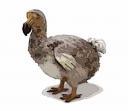4.2. 4: What makes an organism prone to extinction
Click the link to open the handouts for this topic
Reasons that an organism may go extinct and some examples
Populations suffering from any of the above environmental stresses can be prone to extinction.
Often though, more than one pressure operates on an organism, or that the nearer to extinction an organism becomes the greater the number of increasing pressures there are.
 Tigers are large and quite easily hunted. Hunting has meant that their population size is shrinking. Having a valuable fur has increased hunting pressure. They are top predators and will take domestic animals as well as wild. This has increased hunting when they occupy the same space as man. Agriculture is spreading increasing this threat. They need a large home range. This brings them more often into conflict with man. They also have a low reproductive rate. Etc. Etc.
Tigers are large and quite easily hunted. Hunting has meant that their population size is shrinking. Having a valuable fur has increased hunting pressure. They are top predators and will take domestic animals as well as wild. This has increased hunting when they occupy the same space as man. Agriculture is spreading increasing this threat. They need a large home range. This brings them more often into conflict with man. They also have a low reproductive rate. Etc. Etc.
Island organisms can be particularly vulnerable to extinction. Dependent on the size of the island populations tend to be small. Islands have a high degree of endemic species. Genetic diversity tends to be low in small unique island populations. Also island populations tend to be vulnerable to introductions of non-native predators that they have non evolutionary response to.
 The dodo is a classic example of an island species that became extinct.
The dodo is a classic example of an island species that became extinct.
The Dodo original found on the Indian ocean island of Mauritius has become an easy recognizable symbol of extinction. Mauritius was an island that lacked a major predator or even mammals before man arrived. This added to the Dodo’s flightlessness, made it an easy target for sailors stopping of on the island on their way to Indian and China for spices. The first Europeans to land on Mauritus were the Portuguese in 1505, later followed by the Dutch who set up a penal colony there. While there is some debate about whether the Dodo made good hunting, their is little doubt that by clearing the forest for plantations and introducing dog, cats, rats, and especially pigs, the numbers of ground nesting Dodo’s were decimated. Crab eating Macaques introduced by sailors also seem to have had a large impact, stealing Dodo eggs.
The last confirmed sighting of a Dodo was 1662 and an un-confirmed date is sometimes given of 1681 for total extinction of Dodos.
